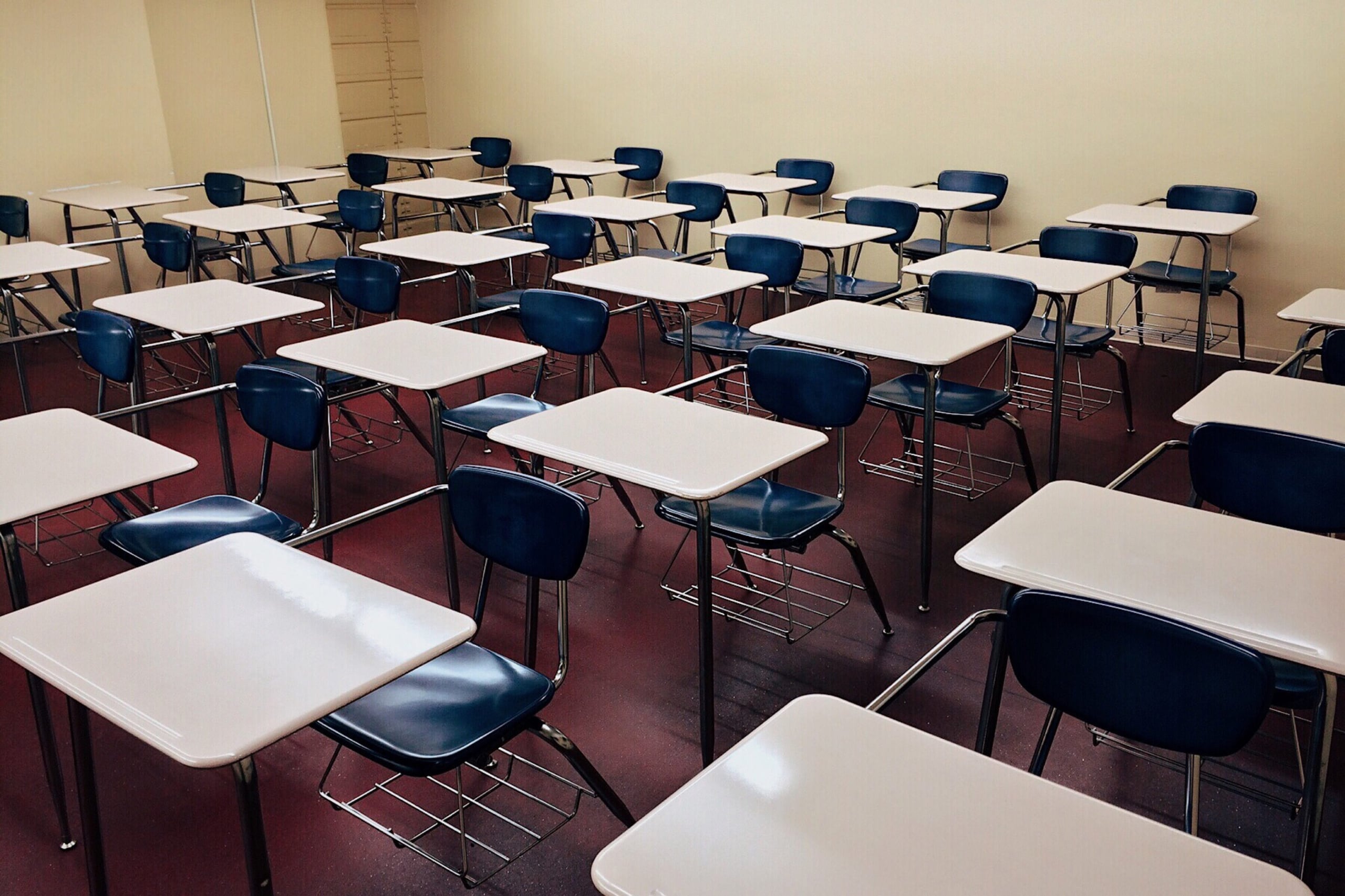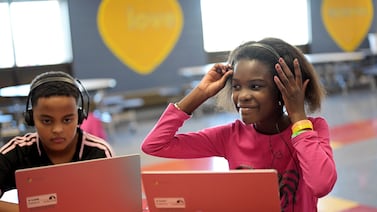After the coronavirus threw more than 1 million children out of their school buildings, Mayor Bill de Blasio made a bold promise: Those who struggled most would experience “unprecedented learning” during summer school to help them catch up for fall.
The education department scrambled to scale up a centralized online platform called iLearn, which contained pre-packaged digital lessons. At the same time, it began requiring that educators conduct live meetings with students — a break from the spring when no such mandate existed. Officials hoped to use the summer as a testing ground for iLearn as well as for its live instruction requirements.
But summer school was hobbled from the start and never bounced back, according to interviews with over a dozen students, teachers, administrators, and experts. By the final week of the program, at least 23% summer school students who were required or recommended to attend have not logged on a single time, representing almost 27,000 students, according to internal data obtained by Chalkbeat. (This does not include students with disabilities who are entitled to attend school year round.)
The rollout raises questions about the city’s ability to support a quality online learning experience as officials prepare for another year dominated by remote instruction. It also may cast a shadow over the fall, as students who were already behind became further disengaged and may be even more distrustful of online learning when they return to school.
“The fear is they won’t persist and are just going to decide that online learning has just been too hard,” said Rachel Forsyth who helps supervise school programs for Good Shepherd Services, a non-profit that partners with dozens of city schools.
From the moment summer school launched in July, iLearn did not work properly. Widespread technical glitches prevented many students from accessing their classes or assignments, problems that stretched over several weeks of the six-week program. Many students received little direction on how to sign on with usernames and passwords newly mandated from the education department’s central offices.

“It was such a choppy beginning — we lost a lot of kids,” said Stephen Lazar, a social studies teacher at Manhattan’s Harvest Collegiate High School who is teaching summer school. “We were just set up to fail.”
A subpar summer experience
Although the education department required teachers to conduct daily live instruction, it did not mandate students participate in live lessons, as students may not be able to attend at regularly scheduled times due to conflicts with jobs or because they lack consistent access to technology. Many students may not have felt incentivized to log on since they had no pre-existing relationship with their assigned teachers, a common feature of summer school.
“The first week of summer school I really didn’t do anything because I didn’t know how to get the work and log on,” said Michael, a 16-year-old student who lives in East New York, Brooklyn, who is taking Spanish, history, and gym and asked that his last name be withheld.
But even when Michael was able to log on, he and other students said they mostly found dull, standardized assignments that culminated in multiple-choice tests or writing assignments with little or no feedback. There didn’t seem to be much reason to attend live sessions.
“It’s basically the same stuff I’ve seen before, but I have to do it over,” said Michael, who had lost motivation while being home in the spring, and now felt further disengaged.
The consequences of a subpar summer experience could reverberate into the fall and beyond. Students may not earn credits they need to graduate, or they could be held back a grade, though it’s unclear to what extent that may happen. The experience might also sour them on remote learning, placing even more pressure on the city to follow through on its plan to offer limited in-person learning this fall.
“It will make both students and teachers involved less trusting of the technology and the [education department] moving forward,” Lazar said of the summer school program. “And for us to come back in any sane way, we need to have trust.”
Some of the challenges of operating an expanded virtual summer school were baked in from the beginning.
The very students sent to attend the online courses were the ones who struggled the most with remote learning. Many of these children suffered from trauma related to the coronavirus, or suddenly had to pick up other responsibilities such as caring for a sibling — circumstances that persisted for many students over the summer even as the pandemic began to subside in New York.
At the same time, city officials had little time to plan and no prior experience running a centralized virtual learning experience on a large scale. The city turned to a platform called iLearn, initially launched about a decade ago, as a clearinghouse to deliver standardized curricula across a range of different content providers. During the spring, individual schools provided their own remote learning programs when buildings shut down.
“There was a real time crunch and less lead time to develop a summer program,” said Aaron Pallas, a Teachers College professor. “What had to be done was so dramatically different than what’s been done in the past.”
‘Just pass them’
In theory, a centralized virtual curriculum could give students access to a common set of quality materials they could access at their own pace. That could free teachers up from having to adapt their own materials to a virtual experience, allowing them to spend more time guiding students through their assignments, holding office hours, and answering questions on live video conferences.
But even before the summer program started, principals wrote a letter to top officials raising alarms over that approach. They wanted their schools to be primarily responsible for summer programming so they could work with students they already knew instead of relying on a centralized corps of educators unfamiliar with their students’ backgrounds.
The city pressed ahead with the centralized model. Many educators said their fears have been borne out, with students reluctant to engage with unfamiliar faces. It’s difficult to know exactly how many students are regularly participating in summer school and are on track to pass their courses because city officials have declined to provide attendance data.
But there are some signs that summer school has failed to engage students. Overall, nearly a quarter of students have not logged on. And there are signs of engagement issues in pockets of the city. Out of more than 1,000 students at two virtual Bronx summer school sites, the majority either barely engaged or are far off track from completing all of their assignments on time, according to data obtained by Chalkbeat.
At one site, only about 13% of enrolled students completed half of their coursework in at least one of their summer classes. At another site, only 28% of enrolled students are actively submitting work in at least one course, the data show.
Education department spokesperson Danielle Filson questioned the accuracy of the data due to widespread technical glitches and incomplete data entry. It’s also possible some students will complete much of their work in the final days of summer school.
“This is the first time we’ve offered summer learning remotely, and we’re doing everything we can to make sure students are logging in, engaging in live instruction, and getting the additional instruction time they need so that they don’t fall behind,” Filson said in a statement. Some teachers found ways offline to deliver content to students, she added, which wouldn’t be reflected in the data.
The data from one of the Bronx sites revealed that many teachers repeatedly tried to find disconnected students, logging their attempts in vast spreadsheets. Some teachers marked that students had no reliable internet access, that phone numbers changed, or voicemail boxes were full. Some notes indicated that teachers successfully helped students log on to iLearn. One educator wrote that they connected with a student’s mother who said that her child was refusing to do the work and would make it up in the fall.
Aida Rosenbaum, a 17-year veteran of the city’s public school system who is teaching earth science this summer in the Bronx, echoed that it has been difficult to connect with students. She often found herself sitting in two-hour Zoom sessions by herself. When students occasionally did show up, they often wanted technical support.

Few of her students are on track to complete their summer coursework.
“Out of 149 students, I probably have three that are passing,” she said.
At her summer school site, and at multiple others across the city, educators have been told to reduce the number of assignments students need to pass their courses. At one site in Manhattan, teachers were asked to lower the number of assignments students must complete from 20 to just five, an internal memo shows.
“They’re like, ‘just pass them,’” Rosenbaum said. “We want to be sympathetic and understand what’s going on in children’s lives, but I don’t understand how this is helpful.” (A department spokesperson said there was no central directive to alter the number of assignments students must complete.)
Pallas said there might be good reasons to pass more students, especially since many of the roadblocks to learning this summer were not their fault. “The longer-run question is: Are we hurting kids by allowing them to move forward by allowing them to use weaker evidence about their mastery of standards?” he said. “It’s an open question — we’re in a pandemic.”
Unfamiliar teachers, canned curriculum
Summer school students said that unfamiliarity with their teachers often got in the way of asking for help — even if they needed it.
Sapphire, a high school senior who is taking English and Spanish summer classes who asked that her full name be withheld, said she has been reluctant to reach out to teachers she doesn’t know. The city has required that teachers offer live lessons, but students do not have to attend them to earn credit.
“It’s just been me by myself — I haven’t been able to reach out to any teachers to ask for help,” she said. “I haven’t been as motivated as I should be to complete my assignments.” Still, she is optimistic about making up enough credits to graduate and attend Kingsborough Community College in the fall.
Other teachers said the curriculum itself has been a hindrance to keeping students engaged this summer.
Frank Marino, from Brooklyn’s M.S. 839, signed up to teach English and social studies classes for middle schoolers. The coursework, he said, involved activities like watching videos, reading slides and matching terms to their definitions.
Many students would simply log on and try to get through the content as fast as possible. Marino tried adapting some of the materials to make them more compelling. For instance, he used a lesson on diary writing to launch a Zoom conversation about whether Instagram Stories count as journaling. Still, only a small slice of his students showed up.
“They would just click through, and log off,” Marino said. “When we were able to touch base or get them into a Zoom call, the videos stay off.”
As the city hurtles toward the fall, most instruction will continue virtually. Observers are nervous about whether the city is doing enough to help individual schools improve remote instruction and learn from the shortcomings of summer school.
The city has already backed off of using iLearn somewhat for the fall. Even though schools will continue to choose their own curriculum, officials were originally going to require them to use a centrally-managed platform such as iLearn or Google Classroom this school year. Now, officials are emphasizing that it will be a slower rollout of these platforms, and schools will have a range of options beyond iLearn and Google Classroom.
Tom Liam Lynch, who runs the website InsideSchools, worked with the education department to implement iLearn a decade ago. He said the city should do more to support teachers and provide best practices for delivering virtual instruction. For instance, city officials could share models of how to provide small-group instruction in a digital setting while giving space for teachers to customize it for their individual classrooms.
“It’s completely problematic if students have lost more instructional time over the summer,” he added. “What worries me most is the continued silence around what constitutes high quality blended and remote learning and teaching.”
Sam Park contributed data analysis





